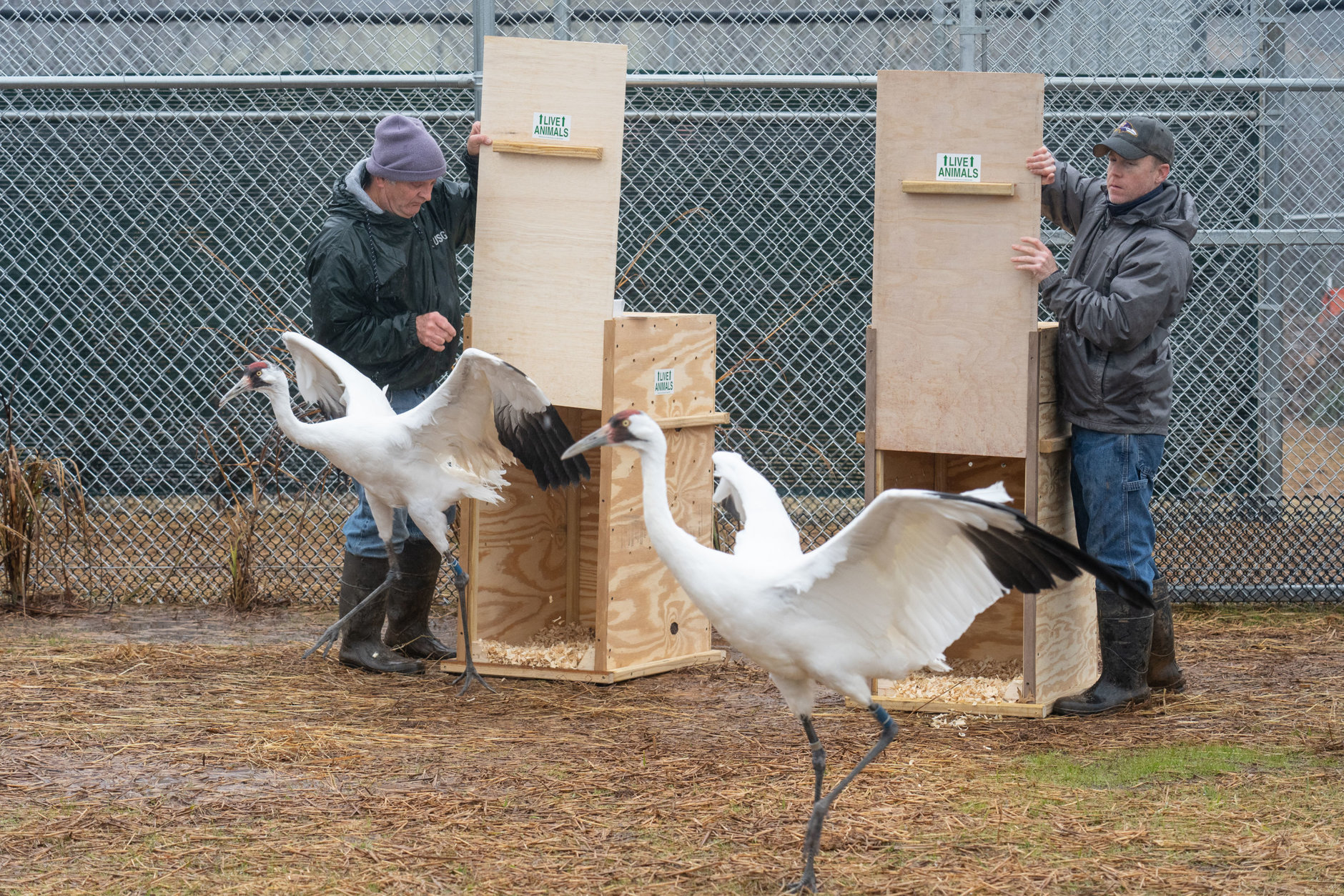
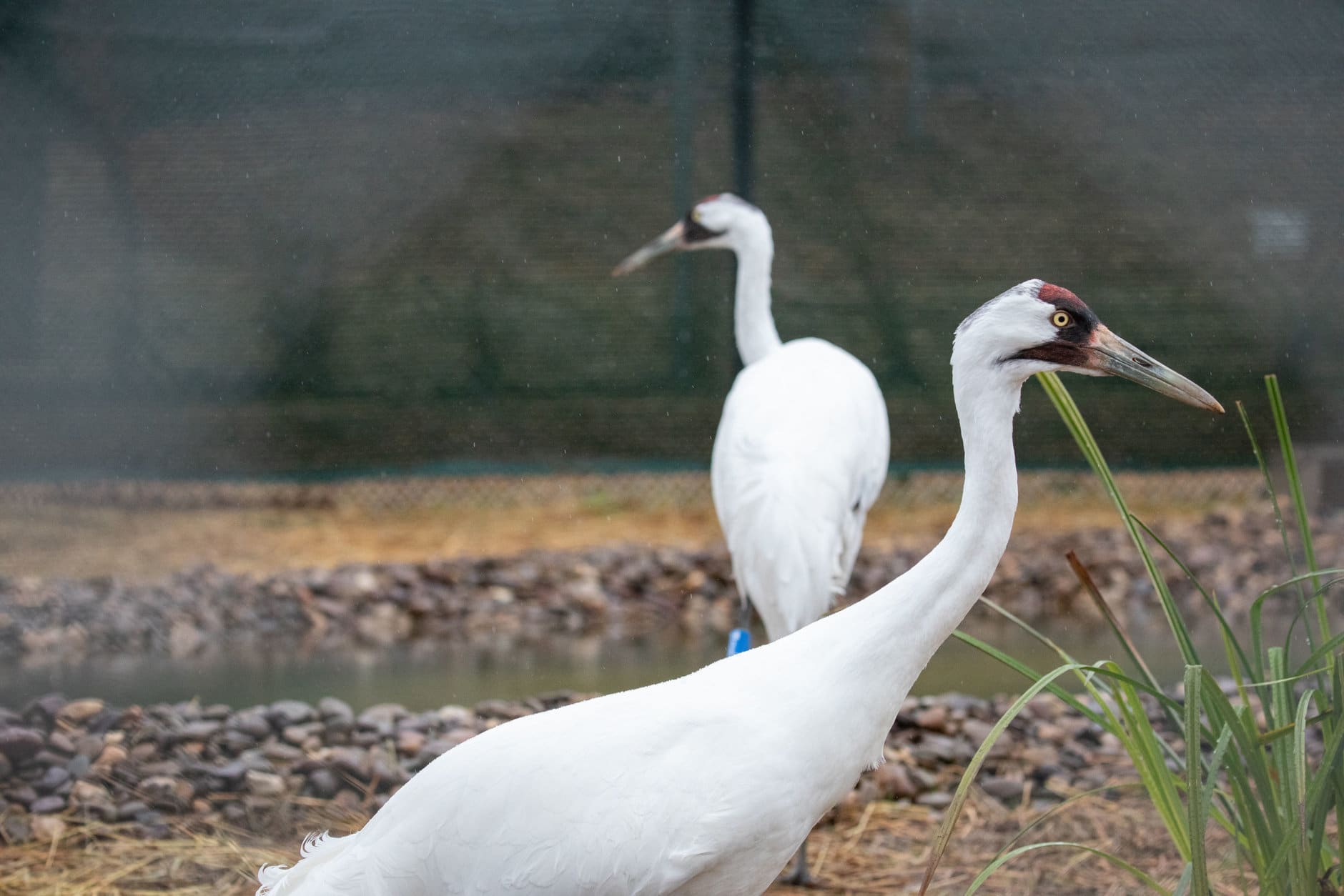
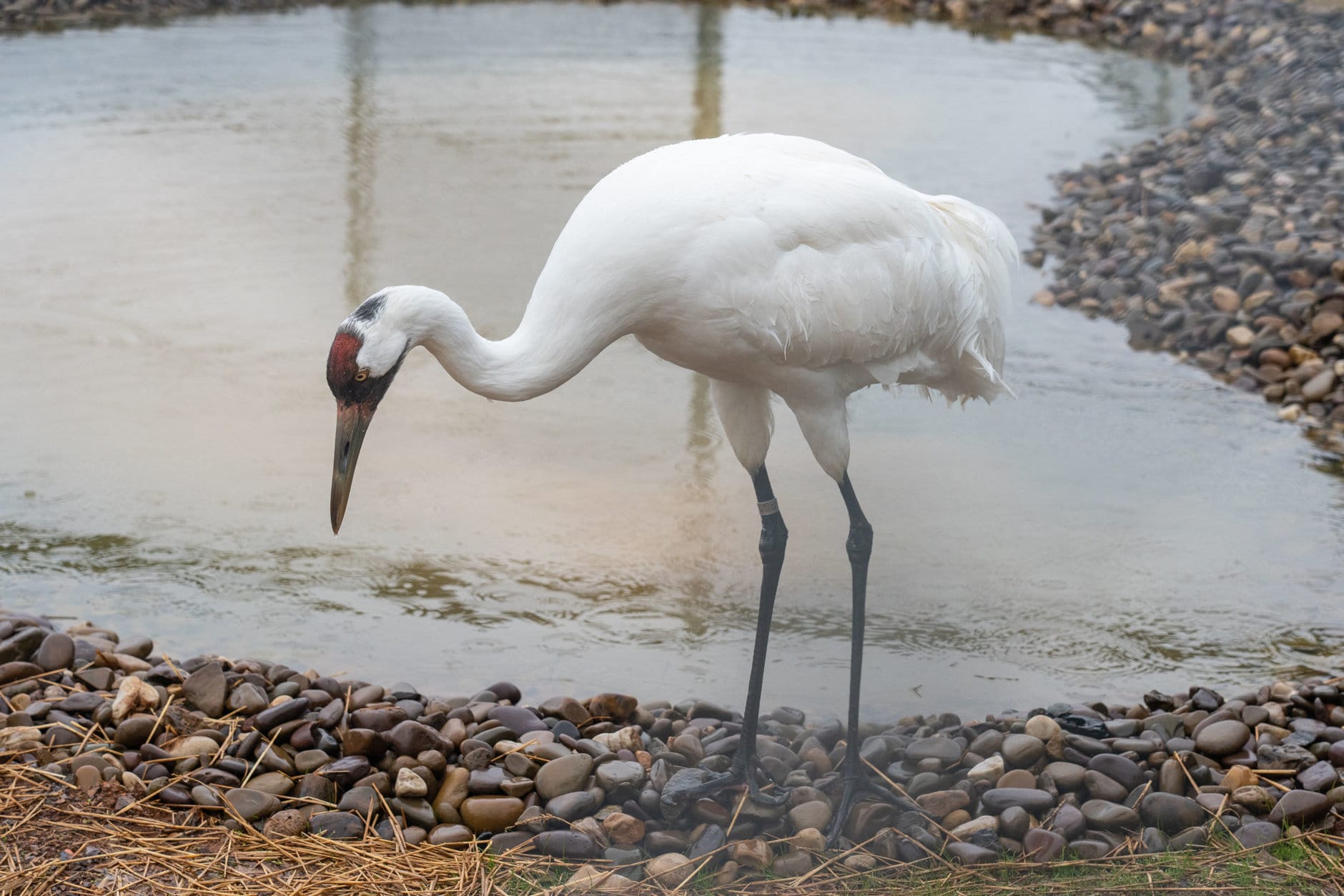
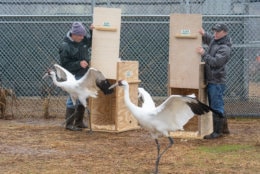
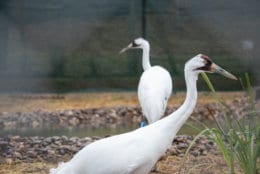
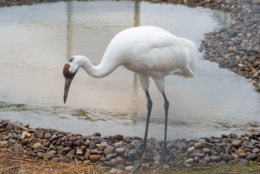
WASHINGTON — Like most migratory birds, the endangered whooping crane usually flies under its own power to get from place to place.
But the twelve birds who now live at the Smithsonian Conservation Biology Institute in Front Royal, Virginia, arrived in large crates.
They’re part of a continued effort to establish a larger whooping crane population for eventual release into the wild. Tens of the cranes had been part of a research program at the Patuxent Wildlife Research Center in Maryland. That program has now been shuttered.
There are fewer than 900 whooping cranes left on the planet, and 163 are kept in captivity.
It will be the job of Chris Crowe, one of the animal keepers at the Smithsonian facility, to make the birds feel at home.
Crowe — yes, he’s aware his last name generates some amusement given his job — has been caring and handling a variety of cranes at the Front Royal campus for years, but being able to care for the whooping cranes is special. “They’re the rarest crane in the world, and they’ll also be the only North American species we have,” he said.
Crowe said whooping cranes overwinter in the Chesapeake Bay. Now, the few flocks left in the wild are most commonly spotted in Texas and Wisconsin. There’s also a nonmigratory flock in Louisiana.“We’re happy to be part of the program to bring these birds back from the brink of extinction,” Crowe said.
While Crowe and Smithsonian staff work to ensure there are more cranes in the world in the future, that doesn’t mean the care that’s given is necessarily appreciated by the big birds.
Whooping cranes stand about 5 feet tall and have a wingspan of around 7.5 feet. “Once they get to know me, once they settle in, they’ll tolerate me working around them,” said Crowe. “But they’ll never be tolerant of being handled, they don’t like to be handled for anything.”
That can pose special challenges given the fact that the breeding program will call for artificial insemination.
The birds can also be territorial and exhibit aggressive behavior. Like herons and egrets, they have long, powerful bills that stab at their prey. “They will defend themselves with that bill,” Crowe explains, adding that the birds will also often use their long legs to defend themselves. “They can jump up and kick at your chest.”
Crowe has to strike that delicate balance of being able to handle the birds without stressing them, while making sure that they don’t become too accustomed to human company. “It’ll definitely help for their chicks to learn to be a little standoffish around people, it will increase their survival in the wild,” said Crowe.
The whooping cranes arrived at the Front Royal campus on Dec. 16, and Crowe said he’s already able to discern the different personalities the birds have.
And yes, he said, they really do have their own quirks: “Some are more curious, others are shy.”
Others yet engage in display behavior when Crowe shows up each day: “When I’m coming and going they’ll make this loud trumpeting call that you can hear for several miles.”
The hope is that one day, more people will hear their call again in the Chesapeake Bay, and throughout North America.








